Statement
Diagnosed with Bipolar I Disorder at age 21.
I was eighteen and visiting the MoMA for the first time on assignment from my professor. The class was freshmen writing 102 and it was called “The Life of the Artist”. She told us to pick one of several paintings listed on a sheet of paper and to write about it. One of the paintings we could choose was Frida Kahlo’s self portrait with cropped hair (1940). I liked the idea of a woman imaging herself and so I looked for this work first.
What I noticed then was the fantastical quality of the work, like the musical notes and lyrics in the top register of the painting and how the liveliness of the hair all around her makes it seem living, moving as though it isn’t hair at all. Kahlo appeared to be a woman of color in a position of agency, sitting upright in a chair, her hair cut short with the leftover tresses from the cut scattered around her. Her gaze was confrontational and defiant, staring back at the viewer, wearing what I would find out was the suit of her ex-/husband, the muralist Diego Rivera. The words above her were in Spanish. Though I didn’t really know the language, I later found out that they were representations of her own vulnerability. As if sung by Diego, they claimed: “Look, if I loved you it was because of your hair. Now that you are without hair, I don't love you anymore.” Kahlo’s work showed me Kahlo as vulnerable, tenacious, and deeply imaginative.
I was never quite sold on her being a Surrealist though, and eventually I wrote a research paper on Kahlo, for the same course, arguing that she wasn’t. The Surrealist poet and art critic, Andre Breton, wanted to believe that Kahlo could come to Surrealism magically/mythically though in another country, in a very different body, thinking about very different concerns. Kahlo herself said that she was painting her reality, working through the physical health problems and societal norms that attempted to confine her, refusing them by performing and portraying herself. She began painting in her sick bed after a terrible car accident left her immobile for a while. She also kept herself very close to Mexican folk culture and kept the culture in her paintings as well.
Now I think self portrait with cropped hair has always seemed very queer to me. The feminist theorist Sara Ahmed talks about finding what is queer within a thing already in order to queer it. As a queer Black woman raised mostly inside/adjacent to conservative Black american Southern Baptist culture, it was not hard for me to notice things I would later describe as queer and indeterminate inside Kahlo’s work . Her cropped hair that she cut, how confidently she portrayed herself in Diego’s oversized suit, while still in makeup and earrings. She made herself both Frida and Diego, taking ownership of the power she perceived in him and his masculinity inside her own form, making it yet another part of her.
Kahlo is the type of artist that I’d like to call a ‘self-builder’. In the times that other artists of her day spent perhaps doing the day job that allowed them the time to make art, perhaps teaching or taking commissions, Kahlo, unable to perform certain types of labor given her constant health complications, constructed iterations of herself through adornment and performative gestures. However Kahlo afforded the time to paint, she spent that time painting, designing and examining herself both historically/culturally and in the present. When asked why she mostly painted herself, she replied with her iconic phrase that would encourage a thousand future selfies, “because I am often alone and I am the subject I know best.” For whatever reason, the self-builder often lives a life that allows them a lot of time alone and a lot of self-definition. The self-builder maybe has always felt alienated, and so to feel less alien they make a persona/s that can share affinities with publics they relate to or feel affinities for. Some self-builders are flaneurs, some are dandies. Some may be unable to walk the streets in an identity of their choosing, due to disability or fear, and so instead turn to the self-portrait.
Self-portraits always feel performative. Kahlo’s self-portrait with cropped hair, for instance, shows Kahlo performing her refusal of complacency and her refusal to bear witness to her inner-life and vulnerabilities alone. She shares her vulnerability with us in the performance of cutting her own hair, wearing her ex-lover’s suit and making him witness her holding the shears, stating seemingly that she did it. Kahlo also built a world with her paintings as they accumulated in her varied oeuvre. Though known for her self-portraits, I also know her for the way she painted, her particular style or hand and the symbols that she reclaimed/elevated/articulated through her work. Paintings like What the water gave me (1938) and Henry Ford Hospital (1932) show that Kahlo was merging the world of her inner-life with the world she perceived. She built the universe in which her self-portraits stood.
I think a lot about the people for whom the Western world and the ideologies it claims as its foundation were not made, specifically Black americans and people of the African diaspora. Who among us that has found ourselves colonized (and want a way out) get the right to build our own universes or selves? For some bodies self-definition comes at a price. Sometimes they are even asked to pay with their lives. For some, there is too much work piled on to ever to have the time to dig a way out and reach self-definition or examine creativity, because of how western society generally defines labor, work and art and determines who should be allowed leisure. The question of who gets to participate in the labor of art making and who has time brings to mind Alice Walker’s seminal Womanist essay “In Search of Our Mother’s Garden”. Walker claims that:
“Black women are called, in the folklore that so aptly identifies one’s status in society, “the mule of the world,” because we have been handed the burdens that everyone else--everyone else--refused to carry. [... Even] our plainer gifts, our labors of fidelity and love, have been knocked down our throats. To be an artist and a Black woman, even today, lowers our status in many respects, rather than raises it: and yet, artists we will be. Therefore we must fearlessly pull out of ourselves and look at and identify with our lives the living creativity some of our great-grandmothers were not allowed to know.” (Walker, 237)
I read this text again last summer and in it Alice Walker told me that the right to be a self-builder and a space-maker, to create spaces outside of the colonial gaze from which to view myself and others like me, is a Utopian demand that I must live out through my art/perform thoroughly, in a way that has blood and bone-marrow. I am not the first person to feel this way, the current only one, and I will not be the last. I look up to the work of artists like Adrian Piper, Lorraine O'Grady, Lorna Simpson, Kara Walker, Ebony G. Patterson, Hannah Black, Sondra Perry, and of many others.
I feel that we are entering an age where many Utopian demands should and will be met (in and outside of the field of art) soon or demanded with such vigor that the plates of certain foundations may shift. The future will be different from the present, because for some the present reality is simply too brutal and too overwhelming to be accepted/endured. This is a time where Utopian demands are for some the last and only hope. My art is for these people and the communities of other artists who are also making for us.
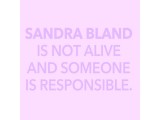 |
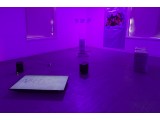 |
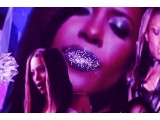 |
 |
Sandra Bland is Not Alive And Someone Is Responsible
2016
Instagram Post
|
Lavendra/Recovery Iteration No. 2
2016
two-channel video, sound, light, Swarovski crystal nail art rhinestones, cellophane, milk crates, bubble wrap, plastic, paint pen, tape, paper, iridescent wallpaper, love
|
Grown (detail)
2016
archival inkjet print on foamboard, Swarovski crystal nail art
32" x 40"
|
Notes on softness
2016
NewHive site
http://newhive.com/
escraaatch/notes-on-softness
|
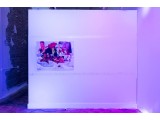 |
 |
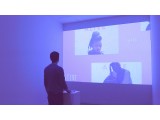 |
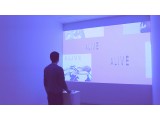 |
A Woman Who Loves Other Women (install)
2016
archival inkjet print on foamboard, crystal rhinestone nail art, gel medium, LED lights, lighting gel, love
Collage: 32" x 40"
|
I wrote the philosophy of the world on a hand mirror (install)
2015
laser-cut plexiglas
approx. 5" x 9"
|
Alive (Not Yet Dead) (install)
2015
interactive NewHive installation
|
Alive (Not Yet Dead) (install)
2015
interactive NewHive installation
|
|